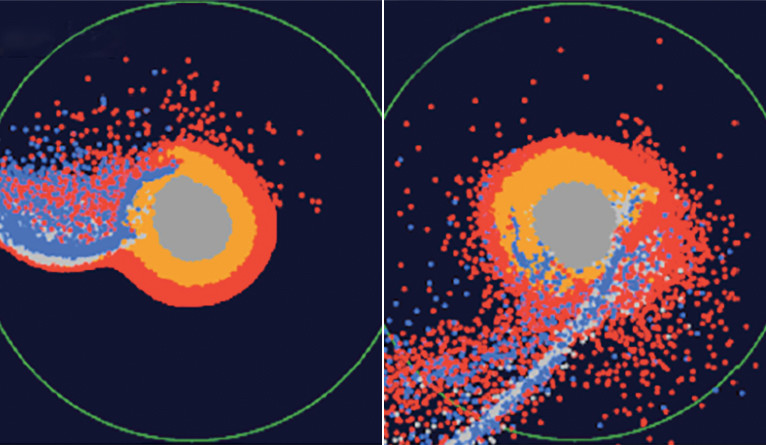Since the late 19th century, scientists have struggled to explain the origin of the Moon. While scientists have long-theorized that it and the Earth have a common origin, the questions of how and when has proven to be elusive. For instance, the general consensus today is that an impact with a Mars-sized object (Theia) led to the formation of the Earth-Moon System shortly after the formation of the planets (aka. the Giant Impact Hypothesis).
However, simulations of this impact have shown that the Moon would have formed out of material primarily from the impacting object. This is not borne out by the evidence, though, which shows that the Moon is composed of the same material Earth is. Luckily, a new study by a team of scientists from Japan and the US has offered an explanation for the discrepancy: the collision took place when Earth was still composed of hot magma.
The study that describes their findings, “Terrestrial magma ocean origin of the Moon“, recently appeared in the journal Nature Geoscience. The study was led by Natsuki Hosono of the RIKEN Center for Computational Science and included researchers from Yale University, the RIKEN Center for Computational Science, and the Earth-Life Science Institute (ELSI) at the Tokyo Institute of Technology.
Aside from simulations that model the impact scenario, the Giant Impact Hypothesis is also plagued by the fact that in an impact, most of the material forming the Moon would be silicate minerals. This would result in Earth’s satellite being iron-poor, but seismological studies have shown that the Moon likely has a core like Earth’s (composed of iron and nickel) and that convection in its core also powered a magnetic field at one time.
Again, the new study offers a scenario which can account for this. According to the model they created, when the Earth and Theia collided roughly 50 million years after the formation of the Sun (ca. 4.6 billion years ago), Earth was covered by a sea of hot magma while Theia was likely composed of solid material.
This model showed that after the collision, the magma on Earth would have been heated far more than solids from the impacting object. This would cause the magma to expand in volume and escape into orbit to form the Moon. This latest model, which takes into account the different degree of heating between the proto-Earth and Theia, effectively explains how there is much more Earth material in the makeup of the Moon.
Shun-ichiro Karato, a professor of geology at Yale University and a co-author on the paper, has conducted extensive research on the chemical properties of proto-Earth magma in the past. As he explained in an interview with Yale News:
“In our model, about 80% of the moon is made of proto-Earth materials. In most of the previous models, about 80% of the moon is made of the impactor. This is a big difference.”

Snapshots from the team’s simulation of the Giant Impact that created the Earth-Moon system. Red points indicate materials from the ocean of magma in a proto-Earth; blue points indicate the impactor materials. Credit: Yale News/Natsuki Hosono (et al.) 2019
For the sake of the study, Karato led the team’s research efforts into the compression of molten silicate. The task of developing a computational model to predict how material from the collision would be distributed, meanwhile, was performed by a group from ELSI at the Tokyo Institute of Technology and the RIKEN Center for Computational Science.
Taken together, the new model demonstrated that superheated magma would be lost to space and coalesce to form a new body in orbit faster than the material lost from the impactor. It also showed that material from Earth’s interior (which would be rich in iron and nickel) would also go into the formation of the Moon – which would then sink to the center to form the Moon’s core.
Essentially, the new model confirms previous theories about how the Moon formed by doing away with the need for unconventional collision conditions. Until now, this is what scientists have done in order to account for the discrepancy between impact simulations and data obtained from the study of Moon rocks and the lunar surface.
This study could also lead to more refined theories of how the Solar System formed and what took place immediately after. Since the impact between the proto-Earth and Theia may have played a role in the eventual emergence of life on Earth, it could also help scientists constrain what is needed in order for a star system to have habitable planets.
Further Reading: Yale News, Nature Geoscience


I can understand that Moon is some what similar to earth because during Theia impact Earth was in molten condition.
But what happened to Theia?
If it got mixed up with earth then Earth+Theia should anyway be different from Moon makeup.
Or else if Theia escaped then where it is now?
.